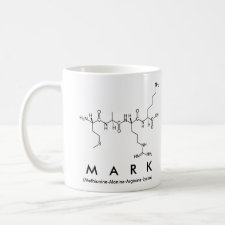
Authors: Dufaud V, Davis ME
Article Title: Design of heterogeneous catalysts via multiple active site positioning in organic-inorganic hybrid materials.
Publication date: 2003
Journal: Journal of the American Chemical Society
Volume: 125
Issue: (31)
Page numbers: 9403-9413.
DOI: 10.1021/ja034594s
Abstract: Catalytic materials bearing multiple sulfonic acid functional groups and positioned at varying distances from one another on the surface of mesoporous solids are prepared to explore the effects that the spatial arrangement of active sites have on catalytic activity and selectivity. A series of organosiloxane precursors containing either disulfide or sulfonate ester functionalities (synthons of the eventual sulfonic acid groups) are synthesized. From these molecular precursors, a variety of organic-inorganic hybrid, mesostructured SBA(.)15 silica materials are prepared using a postsynthetic grafting procedure that leads to disulfide and sulfonate ester modified silicas: [Si]CH2CH2CH2SS-pyridyl, 2(.)SBA, [Si]CH2CH2CH2- SSCH2CH2CH2[Si], 3(.)SBA, [Si]CH2CH2(C6H4)(SO2)OCH2CH3, 4(.)SBA, and [Si]CH2CH2(C6H4)(SO2)OC6H4O(SO2)(C6H4)CH2CH2[Si], 6(.)SBA ([Si] = (equivalent toSiO)(x)(RO)(3)-Si-x, Where x = 1, 2). By subsequent chemical derivatization of the grafted species, thiol and sulfonic acid modified silicas are obtained. The materials are characterized by a variety of spectroscopic (C-13 and Si-29 CP MAS NMR, X-ray diffraction) and quantitative (TGA/DTA, elemental analysis, acid capacity titration) techniques. In all cases, the organic fragment of the precursor molecule is grafted onto the solid without measurable decomposition, and the precursors are, in general, attached to the surface of the mesoporous oxide by multiple siloxane bridges. The disulfide species 2-SBA and 3(.)SBA are reduced to the corresponding thiols 7(.)SBA and 8(.)SBA, respectively, and 4(.)SBA and 6(.)SBA are transformed to the aryl sulfonic acids 11(.)SBA and 12(.)SBA, respectively. 7(.)SBA and 8(.)SBA differ only in terms of the level of control of the spatial arrangement of the thiol groups. Both 7(.)SBA and 8(.)SBA are further modified by oxidation with hydrogen peroxide to produce the alkyl sulfonic acid modified materials 9(.)SBA and 10(.)SBA, respectively. The performances of the sulfonic acid containing SBA(.)15 silica materials (with the exception of 12(.)SBA) are tested as catalysts for the condensation reaction of phenol and acetone to bisphenol A. The alkyl sulfonic acid modified material 10(.)SBA derived from the cleavage and oxidation of the dipropyl disulfide modified material 3(.)SBA is more active than not only its monosite analogue 9(.)SBA, but also the presumably stronger acid aryl sulfonic acid material 11(.)SBA. It appears that a cooperative effect between two proximal functional groups may be operating in this reaction



Join the Society for Molecular Imprinting

New items RSS feed
Sign-up for e-mail updates:
Choose between receiving an occasional newsletter or more frequent e-mail alerts.
Click here to go to the sign-up page.
Is your name elemental or peptidic? Enter your name and find out by clicking either of the buttons below!
Other products you may like:
 MIPdatabase
MIPdatabase









